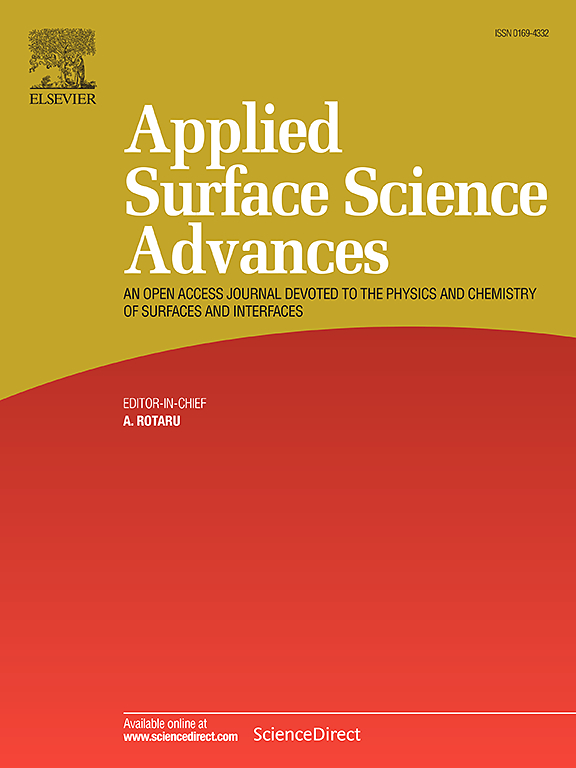Atmospheric pressure plasma jet-assisted fabrication of antibacterial PET/ZnO NP composite
IF 8.7
Q1 CHEMISTRY, PHYSICAL
引用次数: 0
Abstract
In this research, PET/ZnO composites with different ZnO concentrations were synthesized with a method assisted by an atmospheric pressure plasma jet (APPJ). The method is based on the pre-treatment of PET using an APPJ, followed by drop coating with a ZnO colloidal solution synthesized via pulsed laser ablation in water, ensuring clean nanoparticles (NPs). Subsequently, the PET/ZnO composite undergoes an additional APPJ treatment to firmly embed the NPs into the ripples created on the PET surface during the plasma treatment. To determine the suitability of composites for direct food contact and to confirm the tight incorporation of NPs, the PET/ZnO composites were subjected to a leaching test. The OES was employed for the identification of elements and compounds present in the produced argon APPJ. Furthermore, ZnO NPs were characterized using UV–Vis spectroscopy, while PET/ZnO composites were analyzed using water contact angle measurements, FTIR, SEM, AFM, XPS, SIMS, and ICP-MS techniques. Additionally, embedding ZnO NPs into PET improves its UV protection, with the highest concentration leading to a 29 % increase in the UPF value. However, APPJ treatment reduces the modulus of elasticity, but incorporating ZnO NPs at 200 and 500 µL helps reinforce PET’s elasticity. Given the potential application of the PET/ZnO composite in food packaging, antimicrobial activity tests were conducted against Gram-negative Escherichia coli and Gram-positive Staphylococcus aureus bacteria. For the highest ZnO NP concentration, specifically 245.75 mg of Zn per kg of PET, nearly 100 % antibacterial efficiency was achieved for both bacterial strains.
常压等离子体喷射辅助制备抗菌PET/ZnO NP复合材料
在本研究中,采用常压等离子体射流(APPJ)辅助方法合成了不同ZnO浓度的PET/ZnO复合材料。该方法是基于使用APPJ对PET进行预处理,然后在水中通过脉冲激光烧蚀合成ZnO胶体溶液滴涂,以确保纳米颗粒(NPs)的清洁。随后,PET/ZnO复合材料进行额外的APPJ处理,以牢固地将NPs嵌入等离子体处理过程中在PET表面产生的波纹中。为了确定复合材料与食物直接接触的适用性,并确认NPs的紧密结合,PET/ZnO复合材料进行了浸出试验。利用能谱法对所制氩APPJ中的元素和化合物进行了鉴定。此外,利用紫外可见光谱对ZnO纳米粒子进行了表征,同时利用水接触角测量、FTIR、SEM、AFM、XPS、SIMS和ICP-MS技术对PET/ZnO复合材料进行了分析。此外,将ZnO NPs嵌入PET中可以提高其紫外线防护能力,最高浓度可使UPF值增加29%。然而,APPJ处理降低了PET的弹性模量,而在200µL和500µL下加入ZnO NPs有助于增强PET的弹性。考虑到PET/ZnO复合材料在食品包装中的潜在应用,对革兰氏阴性大肠杆菌和革兰氏阳性金黄色葡萄球菌进行了抗菌活性试验。当ZnO NP浓度达到245.75 mg / kg PET时,两种菌株的抗菌效率均接近100%。
本文章由计算机程序翻译,如有差异,请以英文原文为准。
求助全文
约1分钟内获得全文
求助全文

 求助内容:
求助内容: 应助结果提醒方式:
应助结果提醒方式:


